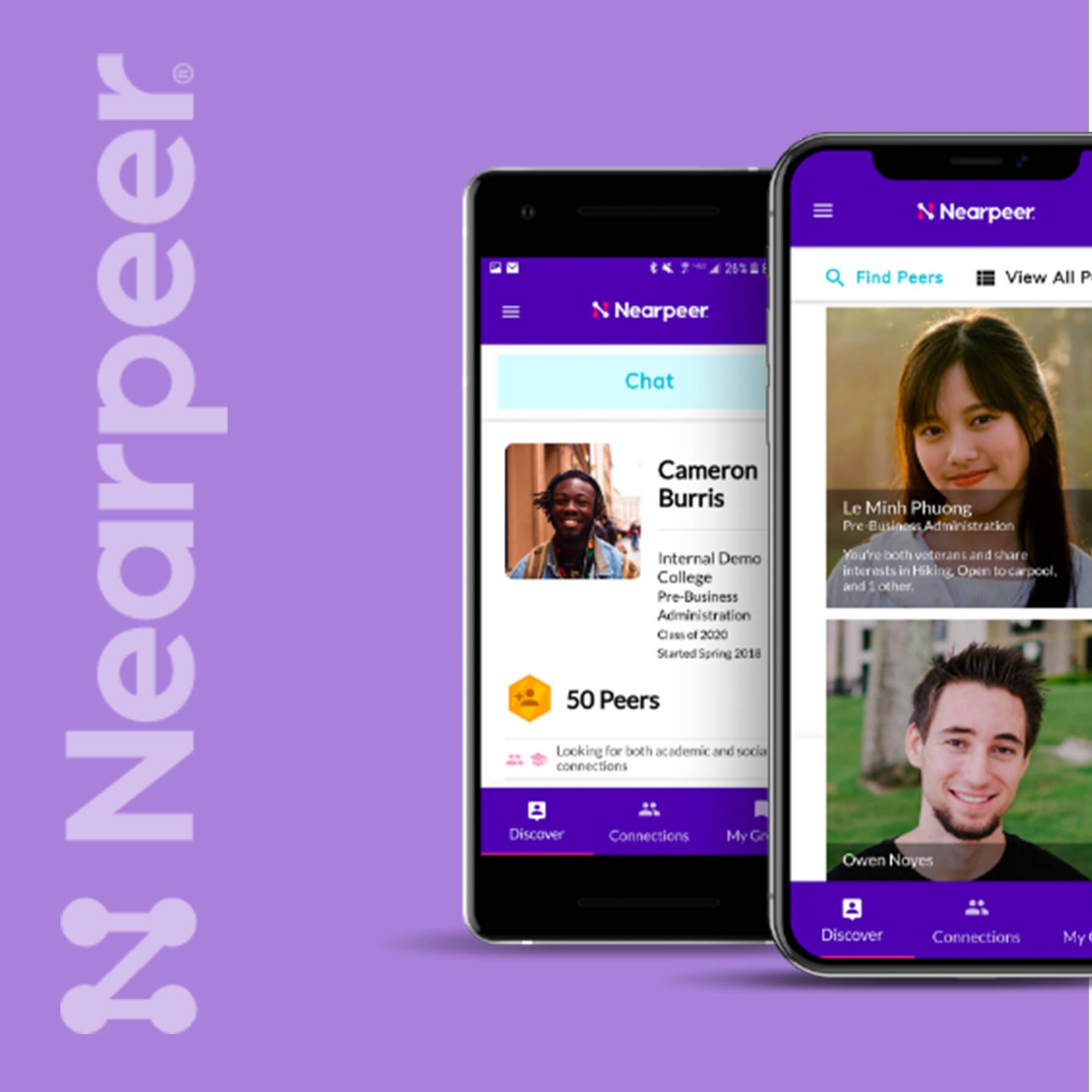CASE STUDY
Nearpeer
From Concept to Launch and Beyond
Introduction
Today Nearpeer is an established startup serving over 19 colleges and growing. But when they approached us in 2017 in search of a development partner, they were but a nascent startup with industry know-how and innovative ideas to create better social connections between new college students. While beneficial for all incoming students, these connections are a particular boon for commuters, transfer students, online students, or students with jobs and families — all growing demographics that often have a more challenging experience finding their community. Nearpeer also offers an approachable way to connect with staff and administrators, including class-based discussions outside of traditional channels like group emails.
Problem
Nearpeer approached Big Room Studios with an idea for an academic social platform and the intent to build it on an aggressive timeline, typical of a small startup with a good idea. Students perform better academically, and are more likely to matriculate, when they have an established support network, and Nearpeer was eager to provide the platform to facilitate these social connections. The goal was to replace clunky incoming class Facebook groups with a more focused environment for students to find new friends and reach out to classmates. It was important that users connect without popular social media accounts, and be free from the onus of deciding whether to grant a new academic acquaintance the ability to scroll through years of social media history. Ultimately we needed to find a balance between an aggressive go-to-market timeline, careful application planning, and a stable pilot program to garner user feedback and test features.
Approach
Their desire to get an MVP in the hands of students and investors as soon as possible, despite the lack of a dedicated technical team or existing design documents, made Nearpeer an ideal candidate for BRS’s application planning services. A detailed application planning phase allowed BRS to build out necessary requirements, wireframes, and user flows, while also allowing us to hit the development phase at full speed. Lots of the work material we produced would also become useful to demonstrate the application to prospective investors or partners while working in parallel to go to market.
BRS facilitated a product planning and design phase to distill the founder’s idea into its most essential components. Students only provide a simple bio and list of interests, without the need for status updates, “likes” or upvotes, or pressure for users to chase popularity. We didn’t need to prioritize for user growth or engagement, either; new users funnel in at the beginning of each semester, and the value to Universities and students comes from bolstering the local community, rather than mining data for resale to advertisers.
Solution
At MVP, the Nearpeer social network was shipped as a web application and mobile application available on both iOS and Android, maximizing access for all students. At its core, a social platform needs to allow users to find one another and communicate, and our UX team baked this into every step of the digital product design process. We developed a compatibility score so that users with important similarities to each other—for example, being parents or online-only students—are easy to discover through a classmate search. Nearpeer makes this explicit, too, telling users the interests they share and attributes they have in common right from the search results. We present users with meaningful group suggestions based on attributes of their profile, such as their major or residence hall. The platform handles peer-to-peer and group communication by integrating with a third-party messaging service to establish private chats between connected individuals, and chat rooms for classes and groups. To respect users’ time and attention, we allow users to choose from sensible notification options, including options to batch notifications to only receive a digest of new activity once every thirty minutes or three hours.


